Real Life at the Liljestrand House
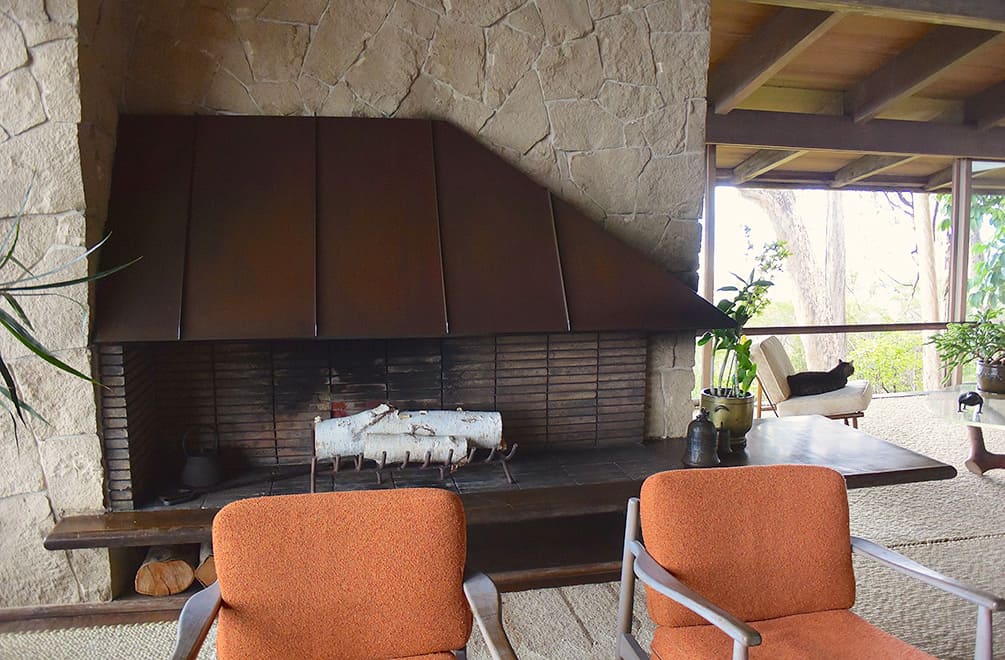
Touring modern houses of note can often be a dry affair. You view the building features, how cutting-edge the materials were, how visionary the architect was. But many times, not much sense of who lived in it and how. The homes are cleaned up, with period appropriate furnishings, but without a sense of how actual people cooked, slept or enjoyed their spaces. I imagine everyone living like Unhappy Hipsters as the docent leads us through the house.
Not so when touring the Liljestrand House in the mountains of Honolulu. Barefoot, in a Hawaiian shirt, Bob Liljestrand, is your tour guide. As you might surmise, he is related to the original owners/commissioners of the home. He is their son and grew up in this house with his brother and two sisters. His charming demeanor and funny stories about his home added a layer of humanity that one seldom experiences when going through an architectural landmark. While we were there a photo shoot for the Japanese magazine Brutus was going on and a woman from the New York Times was writing an article on the house. All the while Bob was genially answering all our questions about his home, recounting real life in the Liljestrand House.
The Liljestrand House was designed by Vladimir Ossipoff in 1952 with much input from Bob’s mother, Betty. Dr. Howard Liljestrand, Bob’s father, was a doctor in the plantation system. This was a building made for a family, their family. Betty was the driving force behind it and was onsite most every day during the construction. From the carport covering the driveway, it is not ostentatious—it looks like a modest house in the mountains.
And that was how Ossipoff designed his homes. Made to stun on the inside. This did and does. It was a House Beautiful Pace Setter House in 1958 meaning the whole issue was devoted to this one home.
Step inside and you’ll be stunned by the incredible view. I don’t normally get the obsession with “views,” but here, I get it big time. You feel like you’re in a modern, gorgeous treehouse. First, you’re hit with the incredible living room’s floor-to-ceiling window view.
And the views continue from every vantage point.
Now for the inside. Ossipoff used common building materials cleverly throughout the house, but what struck me were the redwood walls. They had been treated to be quite pale, almost white-washed with a rosy tint. This was something I’d never seen previously in any house. It leant the house a warm, beachy feeling, even though it’s a mountain site. (painting by John Kjargaard)
This beautiful wood is all through the house. In the library.
In the bedrooms.
Even in the bathroom. And it’s all in great condition because Bob said his mother didn’t let them touch the wood with their hands! That’s a monkeypod countertop, one of the many items fabricated from a single monkeypod tree.
Don’t even get me started on the built-ins. There are built in shelves, drawers, hidden cabinets (operated by pushing with your elbow, no pulls on them), ironing boards, hampers, beds, sofas — so innovative and practical. This allowed the house to have clean lines with no clutter. Ossipoff was ahead of his time. He designed most of the furniture for the house as well.
But my favorite built-in feature of the Liljestrand House is the stereo cabinet. This is enclosed in a wall near the driveway entrance. We walked past it several times before Bob did his reveal. No one suspected this wall contained anything, let alone the ultra-cool turntable and record collection. The whole group was stunned when Bob opened the doors! The Liljestrands were avid entertainers and stacked their favorite records on the spindle and were set for the evening.
Stay tuned for the next post where we’ll visit the kitchen and dining area!
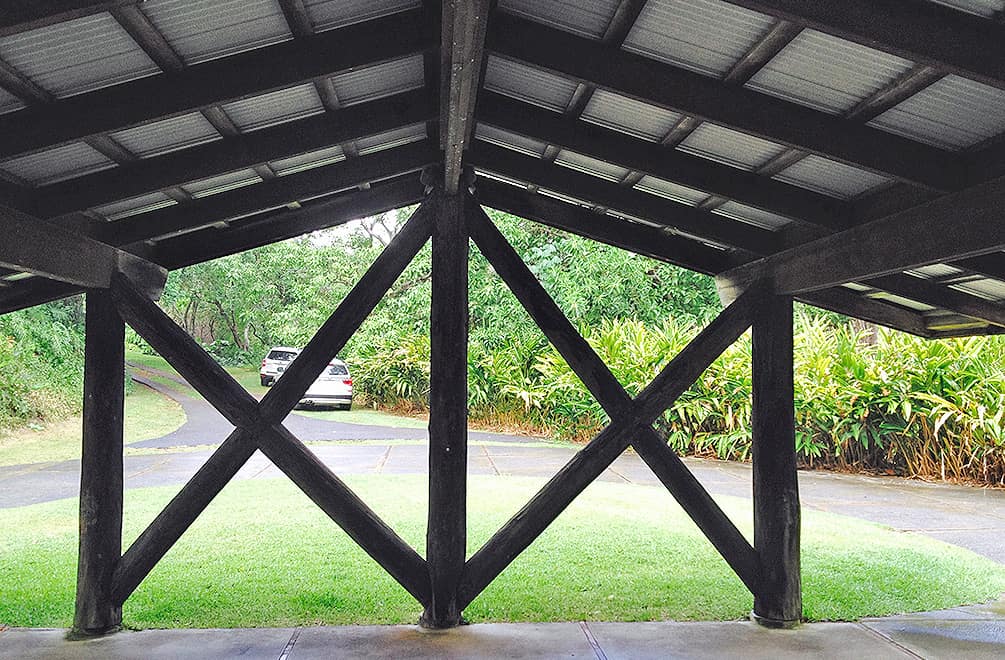
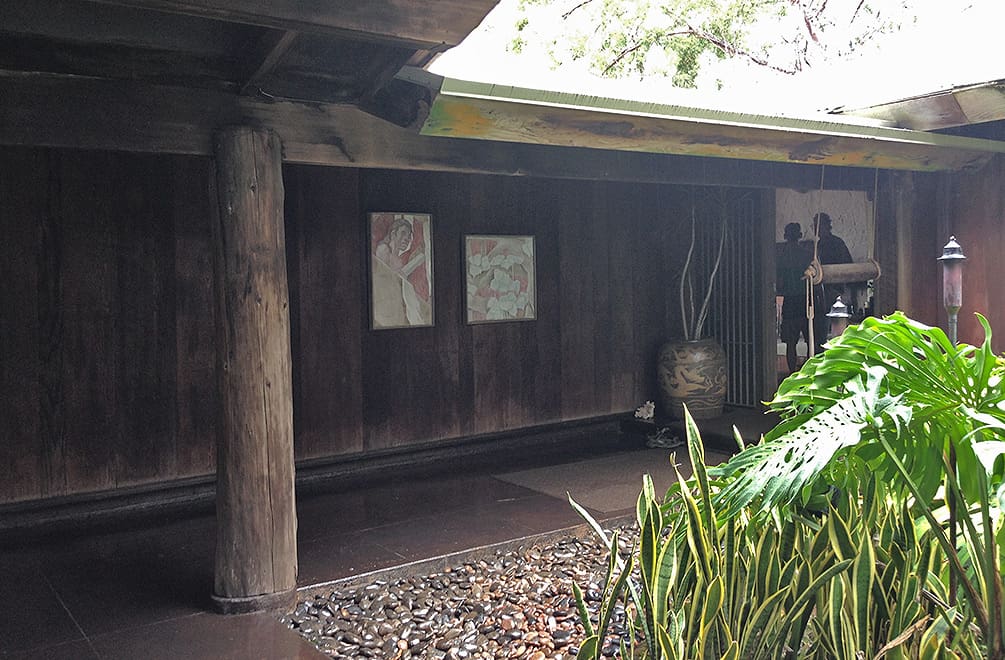
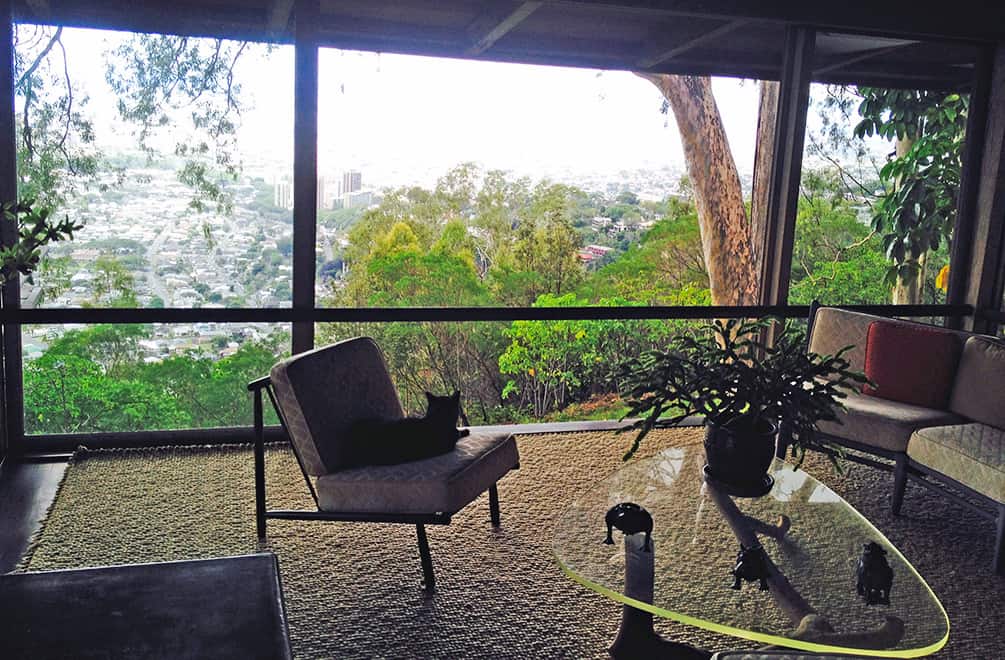
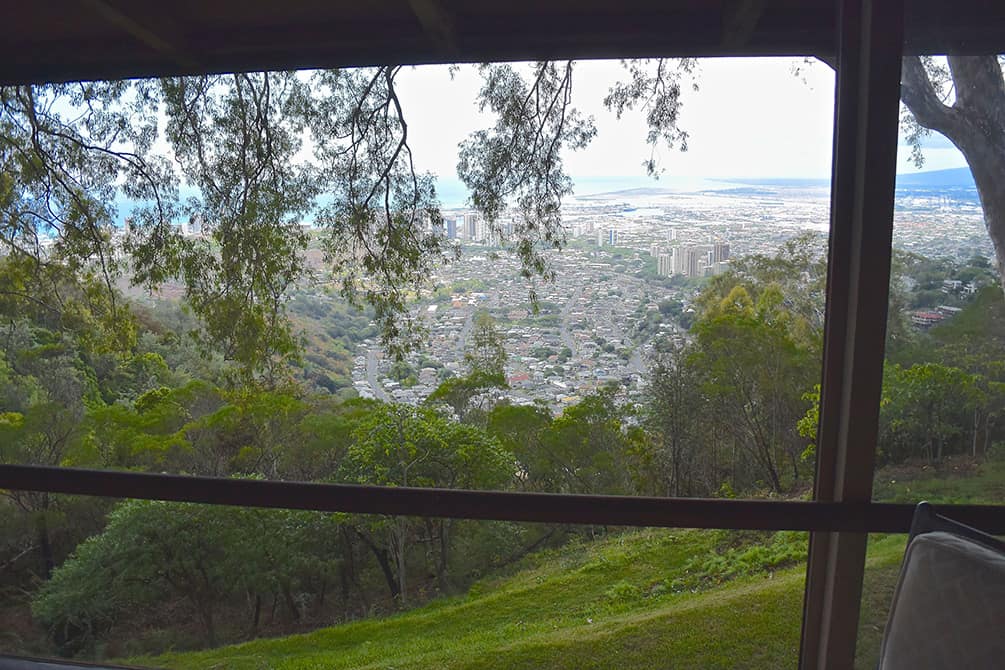
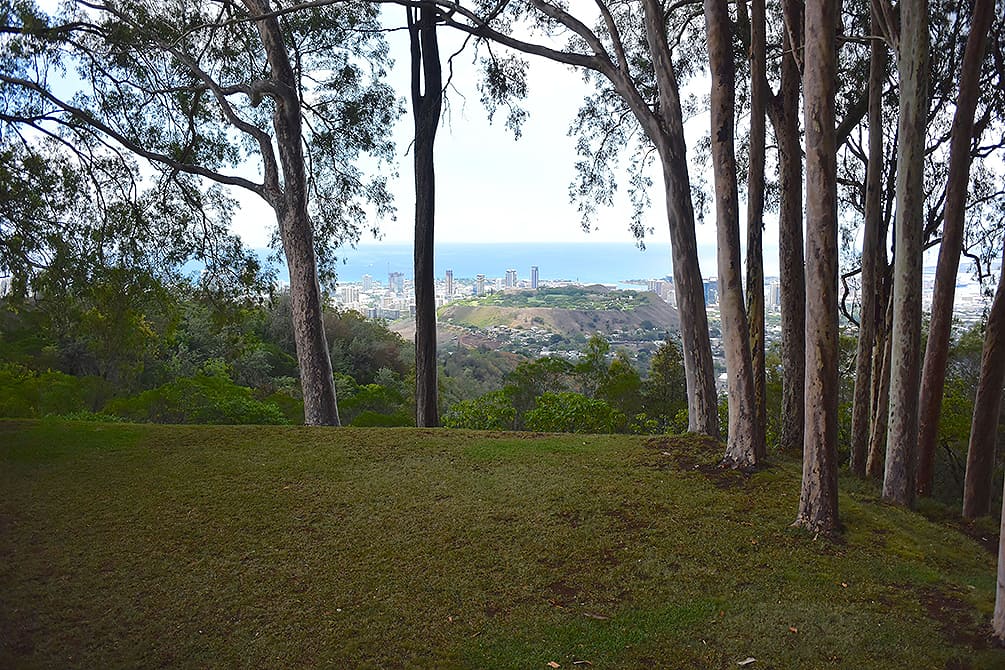
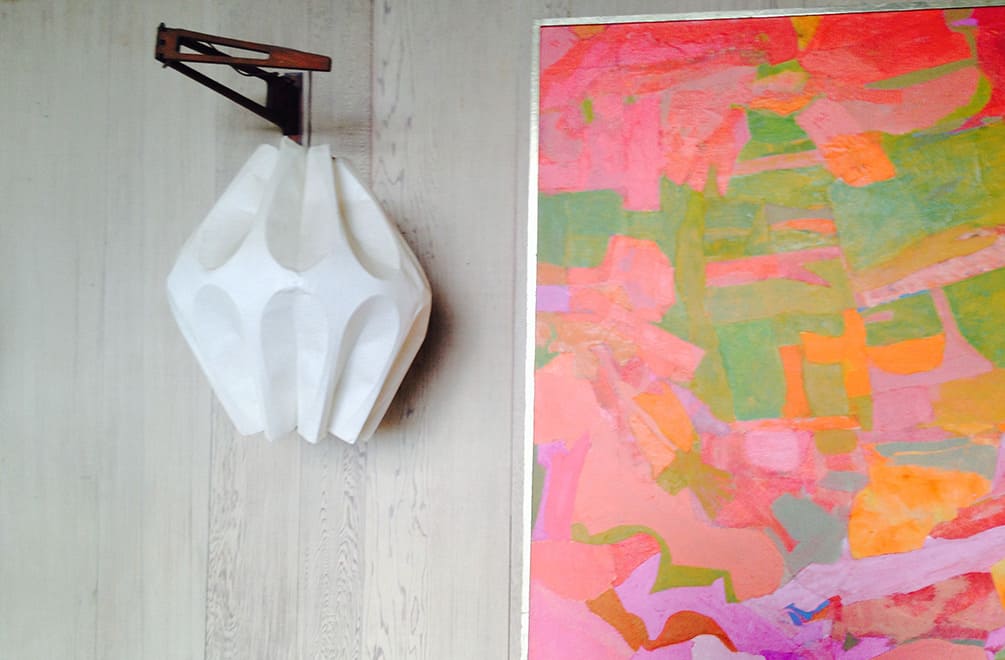
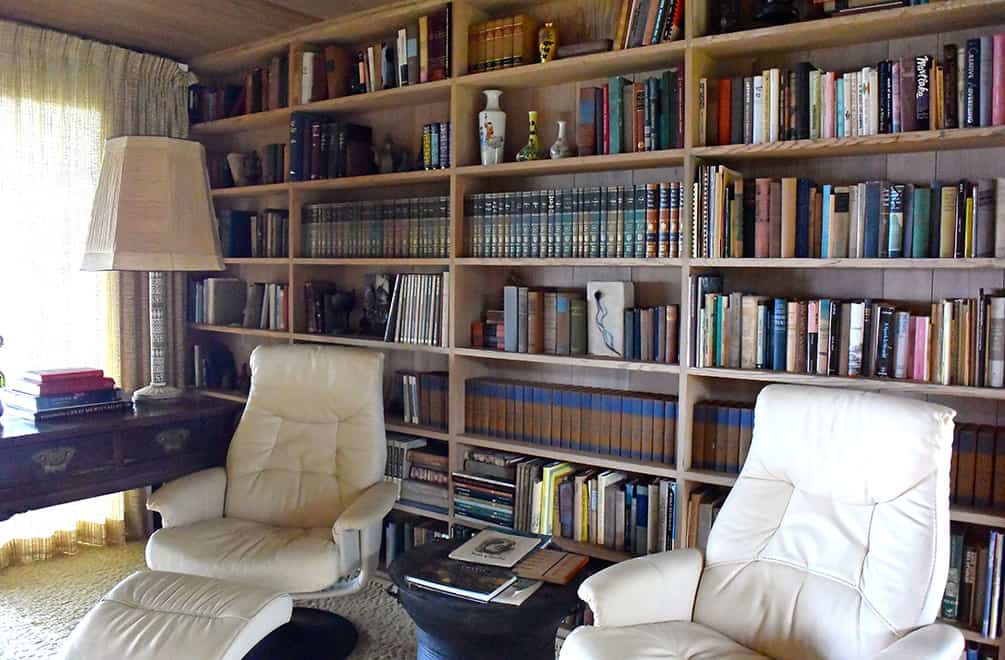
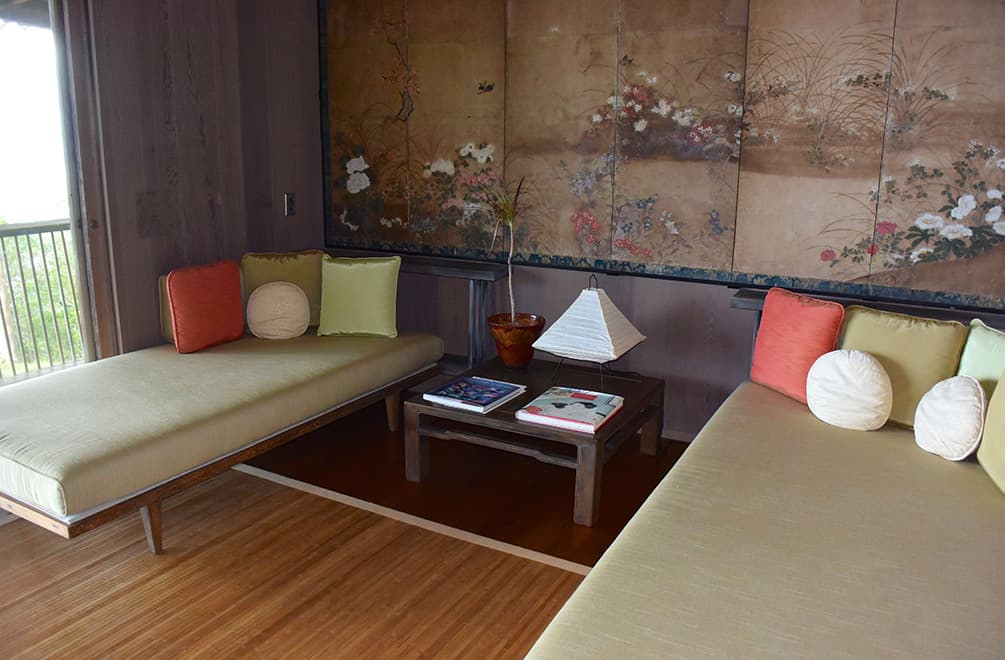
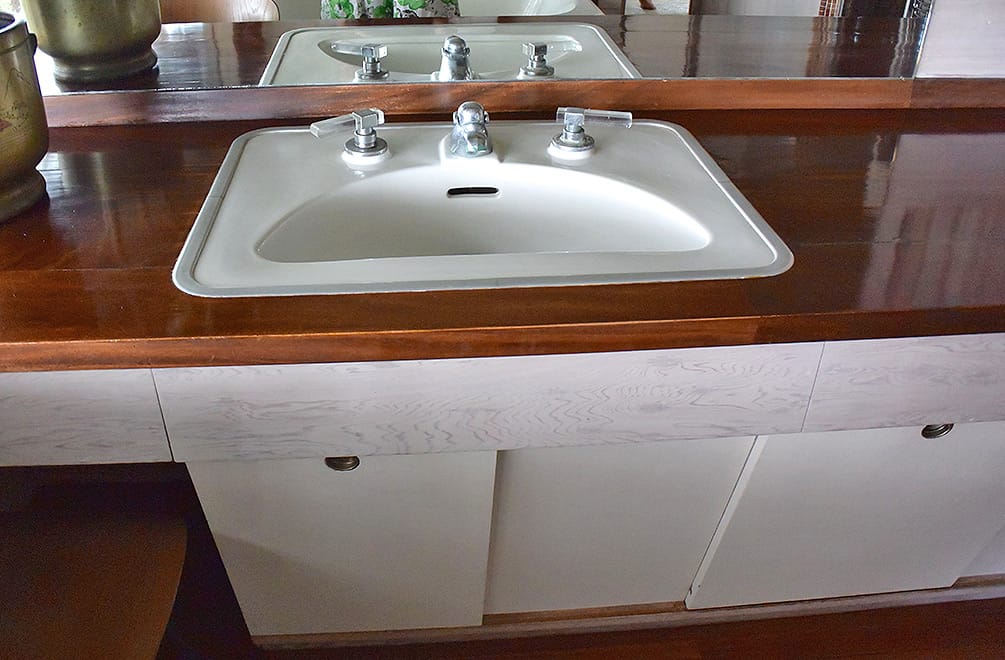
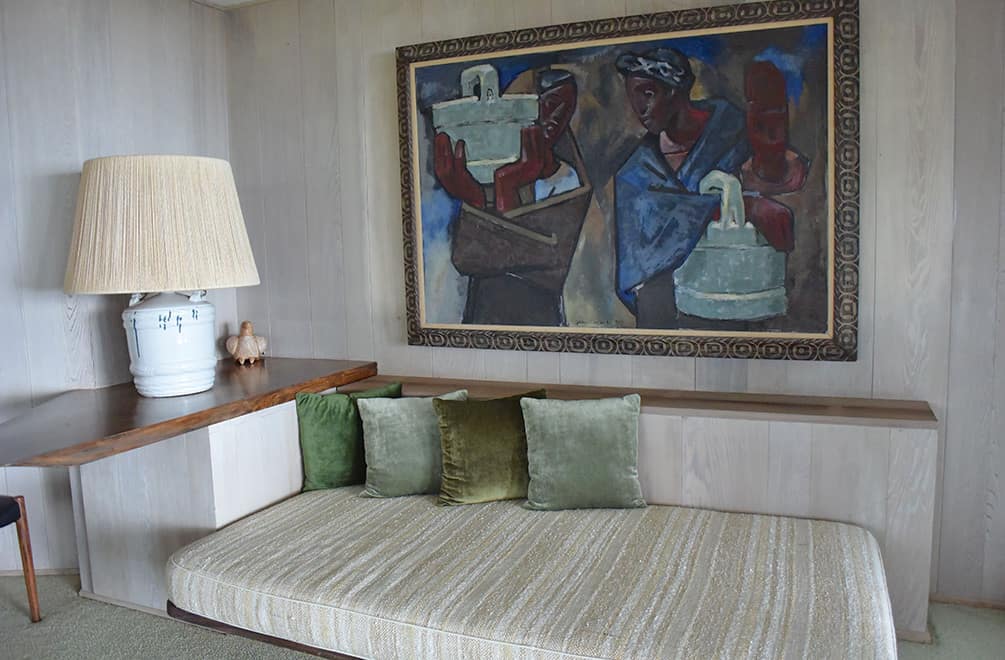
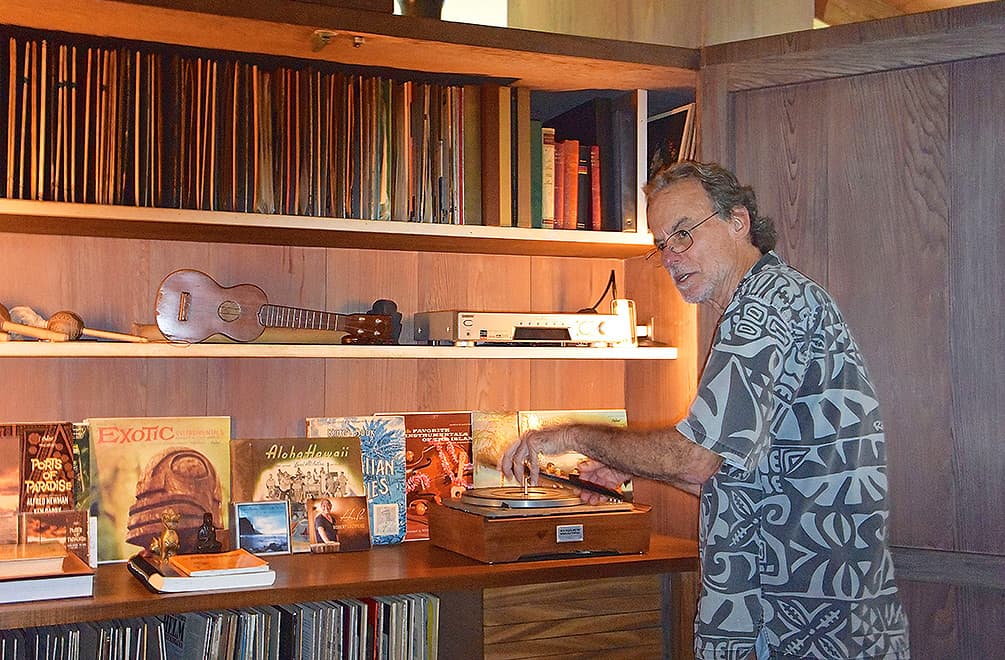
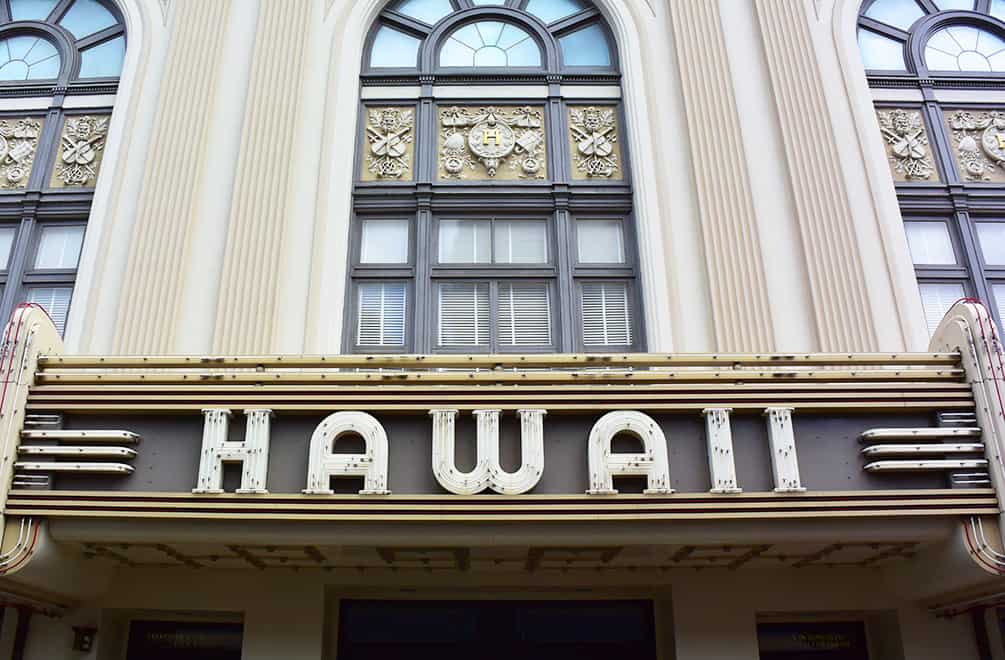
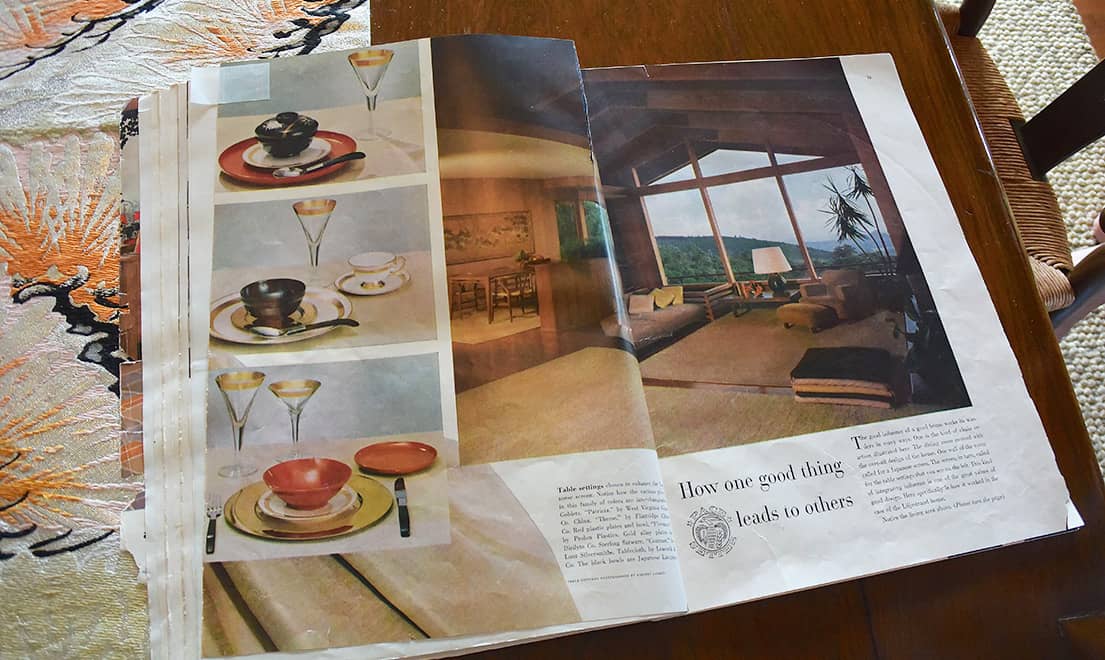
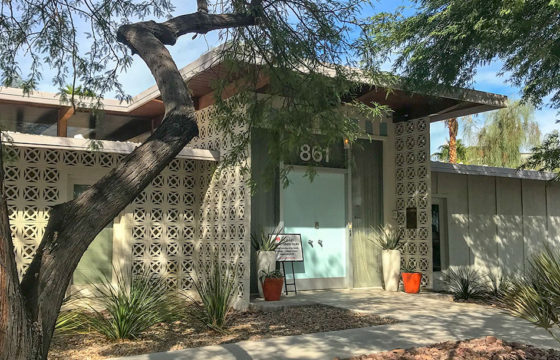
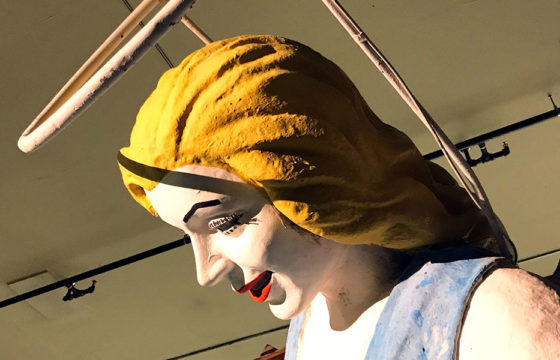
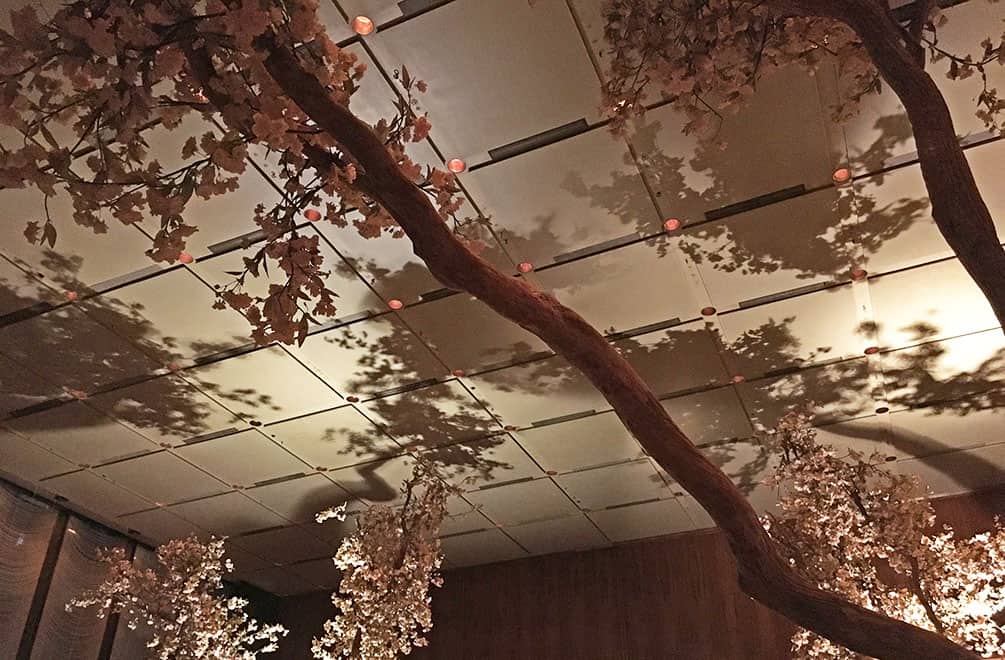
1 Comment